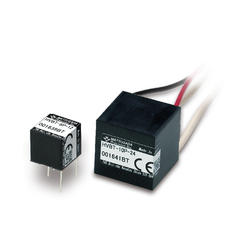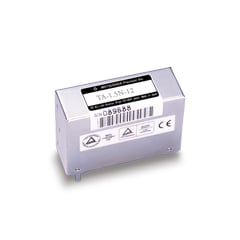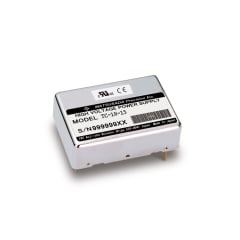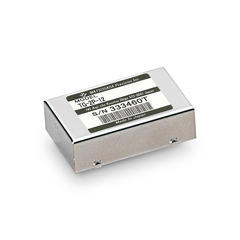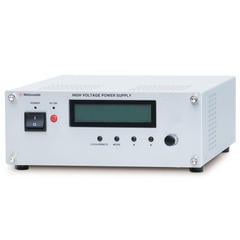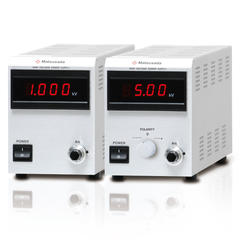A Geiger counter is an instrument that measures radiation. The instrument is based on the Geiger-Müller (GM) tube, a device developed by Hans Geiger and Walther Müller. The tube was an improvement on a basic radiation detection concept originally invented by Geiger.
The Geiger-Muller tube is a cylinder filled with inert gas and subjected to a high voltage. When radiation enters this tube, the gas is ionized and a pulse current is generated between the cathode and anode. By measuring these current pulses, the number of incoming radiation particles or photons is counted.
The value displayed on the meter is the count rate (cps) or the value converted to cesium-137 radiation dose. Geiger-Muller counters can read several types of radiation: beta, gamma, and X-rays. However, because a GM tube's response varies with radiation energy, it requires energy compensation to accurately measure the dose rate from X-rays or nuclides with different energy levels.
Other instruments that can measure radiation include survey meters of scintillation, semiconductor, and ionization chambers. While the term "Geiger counter" specifically refers to instruments using a Geiger-Müller tube, other common types of radiation survey meters include those based on ionization chambers, scintillators, and semiconductors.
The GM-tube survey meters also have limitations. Although the GM counters are inexpensive, they have low detection efficiency for high-energy gamma rays and can provide inaccurate readings at high dose rates due to dead time effects.
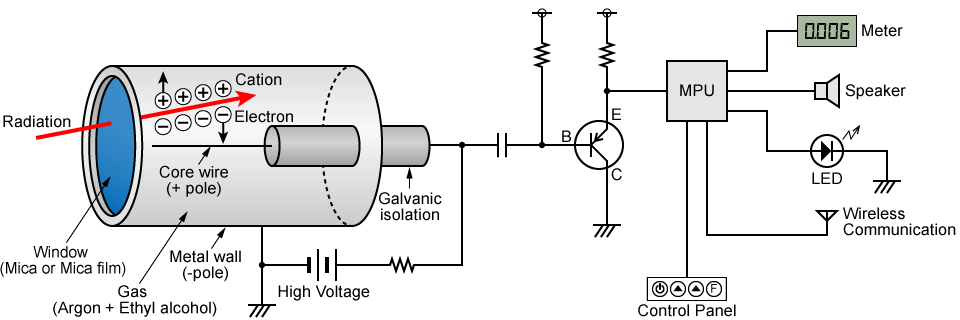
- Related words:
-
- Geiger counter
- Geiger-Müller tube
- GM tube
- Radiation
- Survey meter
- Beta ray
- Gamma ray
- X-ray
- Scintillation survey meter
- Semiconductor survey meter
Recommended products
Matsusada Precision provides a wide selection of modular high-voltage power supplies for GM tubes, as well as for ionization chamber, semiconductor, and scintillation type survey meters.



